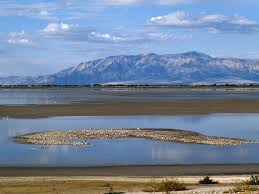
Do you feel like a Martian sometimes? Well, you might be able to start! Mars and Earth share something same -- salt lakes. However, Martian lakes are history and have undergone wet and dry periods, says a team of scientists including a Texas A&M University College of Geosciences researcher. Marion Nachon, a postdoctoral research associate in the Department of Geology and Geophysics at Texas A&M, and colleagues have worked on this.
In their newly published study in Nature Geoscience, these scientists examined Martian geological terrains through Gale Crater, which is a huge 95-mile-wide rocky basin, with the help of NASA Curiosity rover since 2012, as part of the Mars Science Laboratory mission. Gale Crater was a formation 3.6 billion years ago, hit by a meteor, creating a huge impact crater. Its lake was formed more than 3 billion years ago, but went through a drying period that is thought to be linked potentially to the global drying of Mars.
"Since then, its geological terrains have recorded the history of Mars, and studies have shown Gale Crater reveals signs that liquid water was present over its history, which is a key ingredient of microbial life as we know it," Nachon said. "During these drying periods, salt ponds were eventually formed. It is difficult to say exactly how large these ponds were, but the lake in Gale Crater was present for long periods of time -- from at least hundreds of years to perhaps tens of thousands of years," Nachon said.
However, Mars lost its salt lakes and became dryer, losing its planetary magnetic field. The atmosphere got exposed and buffeted by solar wind and radiation over millions of years. "With an atmosphere becoming thinner, the pressure at the surface became lesser, and the conditions for liquid water to be stable at the surface were not fulfilled anymore," Nachon said. "So liquid water became unsustainable and evaporated."
Martian salt lakes are somewhat like many found on our own planet, especially those in an area called Altiplano, near the Bolivia-Peru border. It is an arid, high-altitude plateau where rivers and streams originating from mountain ranges "do not flow to the sea but lead to closed basins, similar to what used to happen at Gale Crater on Mars," Nachon said.
"This hydrology creates lakes with water levels heavily influenced by climate. During the arid periods Altiplano lakes become shallow due to evaporation, and some even dry up entirely. The fact that the Atliplano is mostly vegetation free makes the region look even more like Mars," she said.








